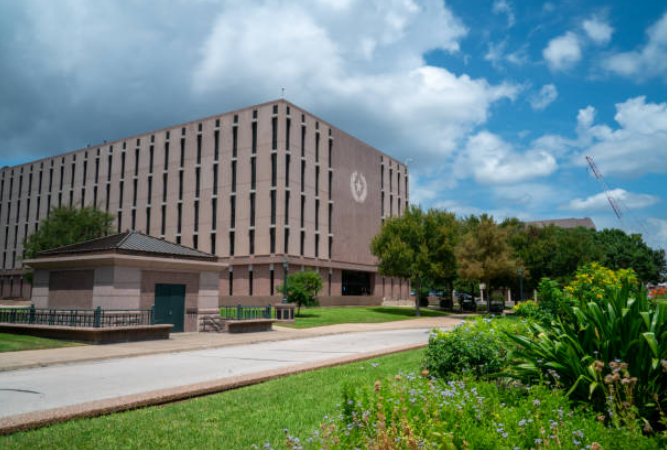Texas is a state with a rich and diverse history, and its landmarks reflect this cultural and historical complexity. From the Alamo in San Antonio to the State Capitol in Austin, Texas is home to a wide range of landmarks that are important to the state’s history and identity. These landmarks include historical buildings, natural features, and cultural sites, and they are an important part of the state’s heritage.
Texas is a state with a rich and diverse history that dates back to the early days of European colonization. Over the centuries, Texas has been shaped by a variety of cultural influences, including Native American, Spanish, Mexican, and Anglo-American traditions. This cultural diversity is reflected in the state’s landmarks, which range from historic buildings and cultural sites to natural features like mountains, canyons, and beaches.
The preservation of these landmarks is important for preserving the state’s history and cultural heritage. It allows future generations to learn about and appreciate the rich history of Texas and the diverse cultures that have shaped it. This is especially important in a state like Texas, which has a rich and complex history that includes both triumphs and struggles.
The Alamo
One of the most famous landmarks in Texas is the Alamo, which is located in San Antonio. The Alamo was originally a Spanish mission called Mission San Antonio de Valero, and it was founded in the early 18th century. During the Texas Revolution, the Alamo became a symbol of resistance for the Texan rebels, who fought and died defending the mission against the Mexican army. Today, the Alamo is a popular tourist destination and a symbol of Texa’s independence.
The State Capitol
The State Capitol in Austin is another important landmark in Texas. The Capitol building was completed in 1888 and is the home of the Texas legislature. The Capitol is an impressive architectural feat, with a dome that stands 302 feet tall, making it the tallest state capitol building in the United States. The Capitol is open to the public, and visitors can take guided tours to learn more about the history and architecture of the building.
Natural landmarks
In addition to its cultural and historical landmarks, Texas is also home to a number of natural landmarks. These include Big Bend National Park, which is home to a wide range of flora and fauna and features beautiful canyons and mountains. The Guadalupe Mountains National Park is another popular natural landmark, with its towering peaks and deep canyons. The Padre Island National Seashore is also a popular natural landmark, with its long stretches of sandy beaches and diverse array of wildlife.
Preservation of Texas landmarks
The preservation of Texas landmarks is important for preserving the state’s history and cultural heritage. Many organizations, such as the Texas Historical Commission, work to preserve and restore the state’s landmarks. These organizations also work to educate the public about the significance of these landmarks and encourage their appreciation.
The history of the Alamo
The Alamo is one of the most iconic landmarks in Texas, and its history is deeply intertwined with the state’s struggle for independence. The Alamo was originally a Spanish mission called Mission San Antonio de Valero, which was founded in the early 18th century. In the early 19th century, the mission was converted into a military fort and played a key role in the Texas Revolution. During the revolution, the Alamo became a symbol of resistance for the Texan rebels, who fought and died defending the mission against the Mexican army. The famous phrase “Remember the Alamo” became a rallying cry for the Texans as they fought for independence. Today, the Alamo is a popular tourist destination and a symbol of Texa’s independence.
The State Capitol: A symbol of Texas government and history
The State Capitol in Austin is another important landmark in Texas, and it has played a central role in the state’s history and government. The Capitol building was completed in 1888 and is the home of the Texas legislature. The Capitol is an impressive architectural feat, with a dome that stands 302 feet tall, making it the tallest state capitol building in the United States. The Capitol is open to the public, and visitors can take guided tours to learn more about the history and architecture of the building. The Capitol is a symbol of the state’s government and an important part of Texas’s history and cultural heritage.
FAQs:
1. What is the Alamo?
The Alamo is a former Spanish mission in San Antonio, Texas that is now a symbol of the state’s struggle for independence.
2. What is the State Capitol?
The State Capitol is the home of the Texas legislature and an important landmark in Austin, Texas.
3. What is the purpose of preserving Texas landmarks?
The preservation of Texas landmarks is important for preserving the state’s history and cultural heritage and allowing future generations to learn about and appreciate the rich history of Texas.
4. What are some examples of natural landmarks in Texas?
Some examples of natural landmarks in Texas include Big Bend National Park, the Guadalupe Mountains National Park, and the Padre Island National Seashore.
5. Who is responsible for preserving Texas landmarks?
There are several organizations that are responsible for preserving Texas landmarks, including the Texas Historical Commission.
Conclusion:
Texas is home to a wide range of landmarks that are important to the state’s history and cultural identity. From the Alamo and the State Capitol to natural landmarks like Big Bend National Park and Padre Island National Seashore, these landmarks are an important part of Texas’s heritage. The preservation of these landmarks is crucial for preserving the state’s history and cultural heritage, and organizations like the Texas Historical Commission play an important role in this effort


